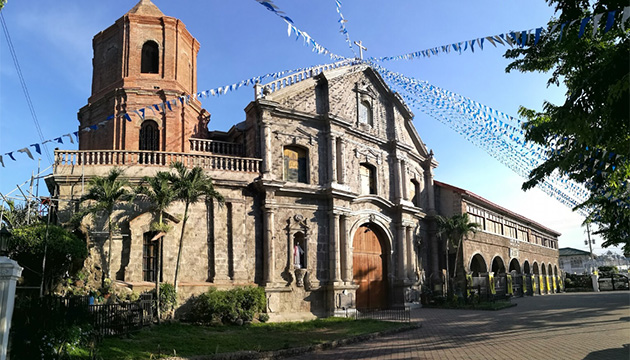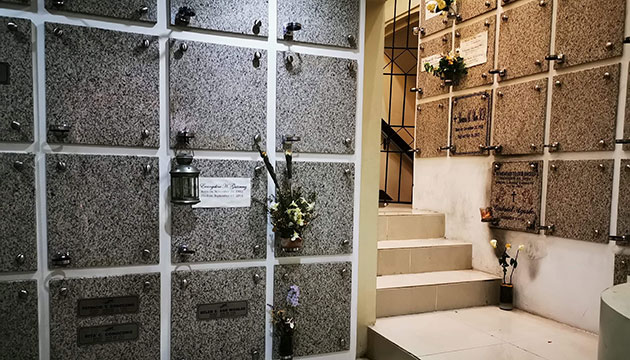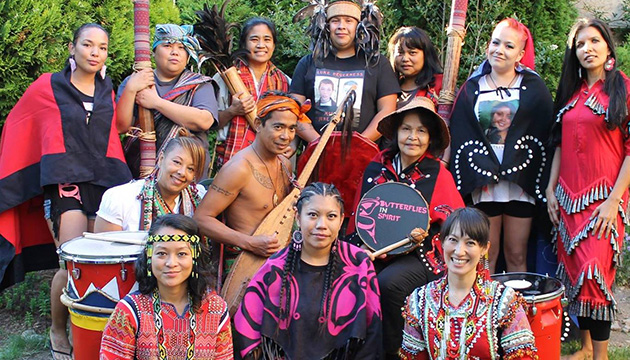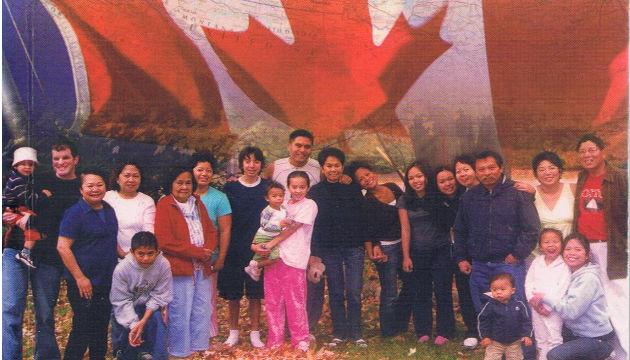Some Catholic churches in the Philippines have found a new source of income to supplement the weekly offerings of their parishioners. They have established a columbarium. A columbarium or columbary as it is locally called is “a structure of vaults lined with recesses for cinerary urns” (those holding a deceased's cremated remains). Each niche can hold a number of cremation urns (up to 4). The niche faceplate, in granite, glass or brass, usually has an inscription engraved upon it with name, date of birth and date of death of the deceased.
The Catholic church of San Antonio de Padua in Pila, Laguna is one is one of those with a newly opened columbarium. The church was built during the Spanish colonization of the Philippines and was the first Antonine parish church in the Philippines in 1581 and probably in Asia. On April 23, 2019 it was designated as the National Shrine of San Antonio de Padua by the Catholic Bishops' Conference of the Philippines.
The Pila church, because of its age, has been needing a lot of unaffordable renovations and repairs. Two years ago, to supplement the parish income from weekly collections to cover expenses, the parish converted a wall in its sacristy as a columbarium or columbary. It has 52 niches which sold out in a matter of months. A niche at the Pila Catholic church columbarium costs Pesos 60,000. It “entitles the owner the right to use the niche in perpetuity according to the terms and conditions set by the laws of the church diocesan policy. It includes the Parish Mass intentions on the death anniversary and birthday of the departed.”
Since the Catholic church relaxed its rulings on cremation in the 1960s, more people have chosen cremation over burial in cemeteries. The Church, however, frowns on the usual practice of keeping the ashes at home. It now requires that the ashes of the dead be given due respect and placed where they should ideally be, in a columbarium, be it in a church or in a memorial park.
With the rising costs of burial plots, public and catholic cemeteries like the LaLoma catholic cemetery in Caloocan as well as commercial memorial parks have also set up their own columbarium. Church columbaria in Metro Manila cost more than in the provinces. A niche in the columbarium of the Sanctuario de San Vicente de Paul in Quezon City ranges from Pesos 70,000 to 110,000. Other catholic church columbaria in the Philippines are: St. Therese columbarium in Pasay City and the Parish of the Alliance of Two Hearts in Banawa, Cebu City one of the early ones.
With cemeteries getting too crowded, more and more people are opting for a columbarium to honor their departed. It is cheaper, requires very little maintenance and easily accessible for visits any time for quiet prayers and reflection.














